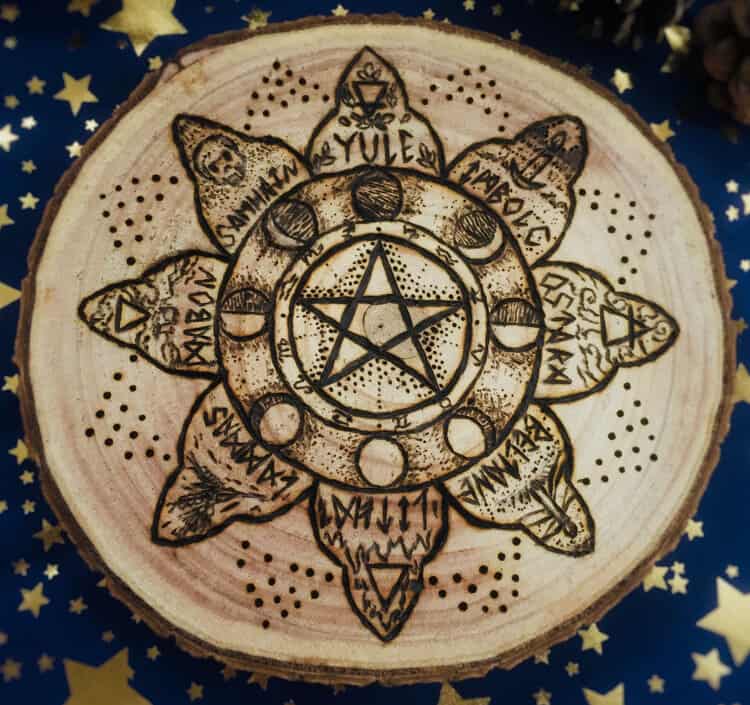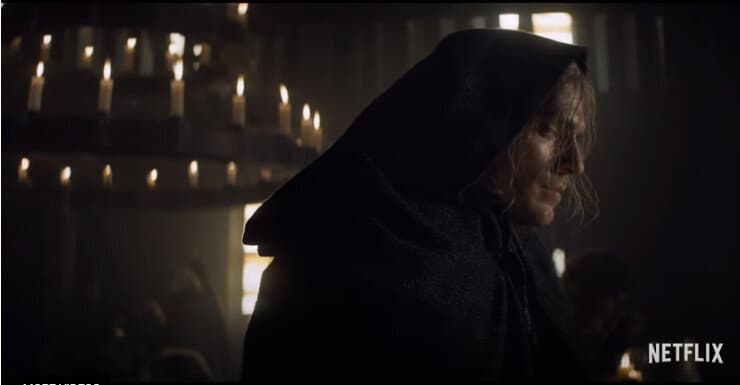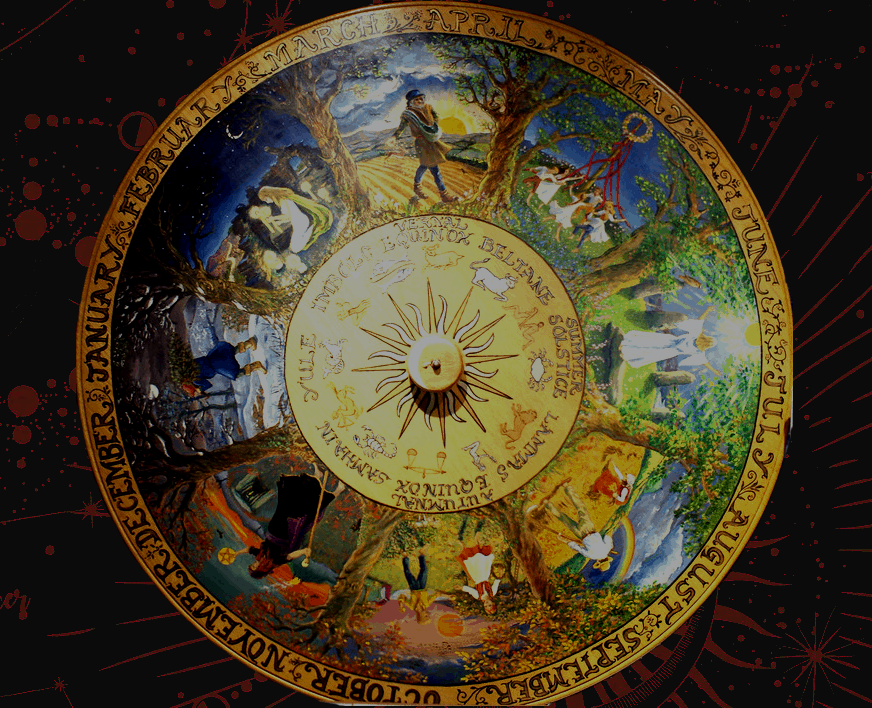Witchcraft, often associated with dark magic and supernatural powers, has been a topic of fascination and fear for centuries. But the beauty of witchcraft goes beyond the popular misconceptions and Hollywood depictions. If you go beyond the superficial, just below the surface, lies a deep and beautiful practice known as the Craft of the Wise. Witchcraft is not just about casting spells or cursing enemies, but rather a spiritual path that embraces nature, intuition, and wisdom. In this blog post, we will explore the true essence of witchcraft and discover the beauty and power behind this ancient craft.
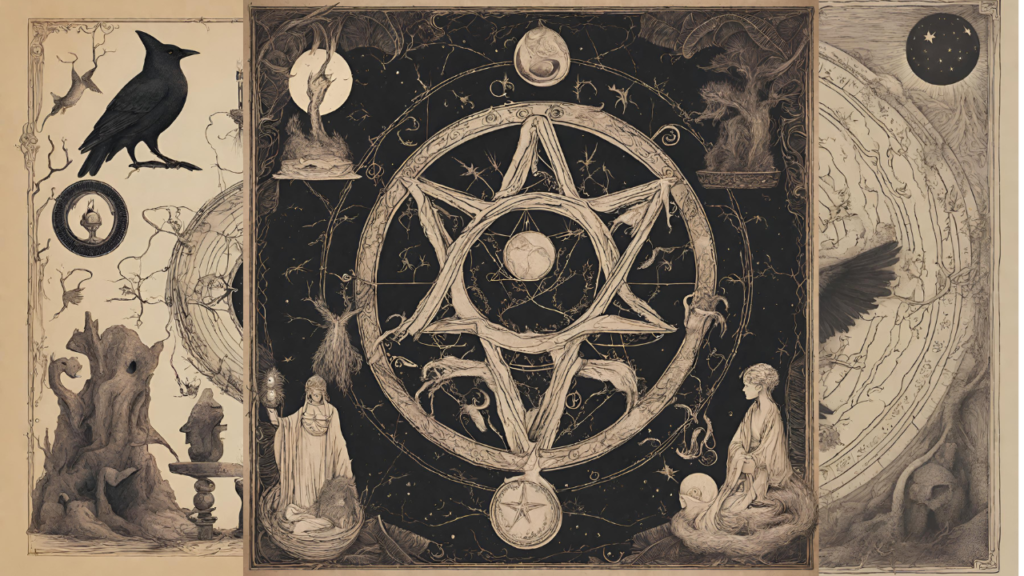
Understanding the Basics of Witchcraft
Before delving into the enchanting world of witchcraft, it is essential to understand its basic principles and practices. Witchcraft is not a one-size-fits-all concept; rather, it is a diverse and personal spiritual path that varies from individual to individual. However, there are a few foundational elements that form the backbone of this ancient craft.
First and foremost, witchcraft revolves around the belief in energies and forces that exist beyond what meets the eye. Practitioners recognize that everything in the universe is interconnected, and they harness this interconnectedness to bring about positive change in their lives and the lives of others. This understanding forms the basis of spellwork, which involves using various tools, such as candles, herbs, crystals, and incense, to focus and direct energy towards a specific intention.
Intuition is another vital aspect of witchcraft. It is the ability to tap into one’s inner wisdom and trust the messages received from the universe. Witches rely on their intuitive senses to guide them in their craft, whether it’s selecting the right spell ingredients or interpreting signs and omens.
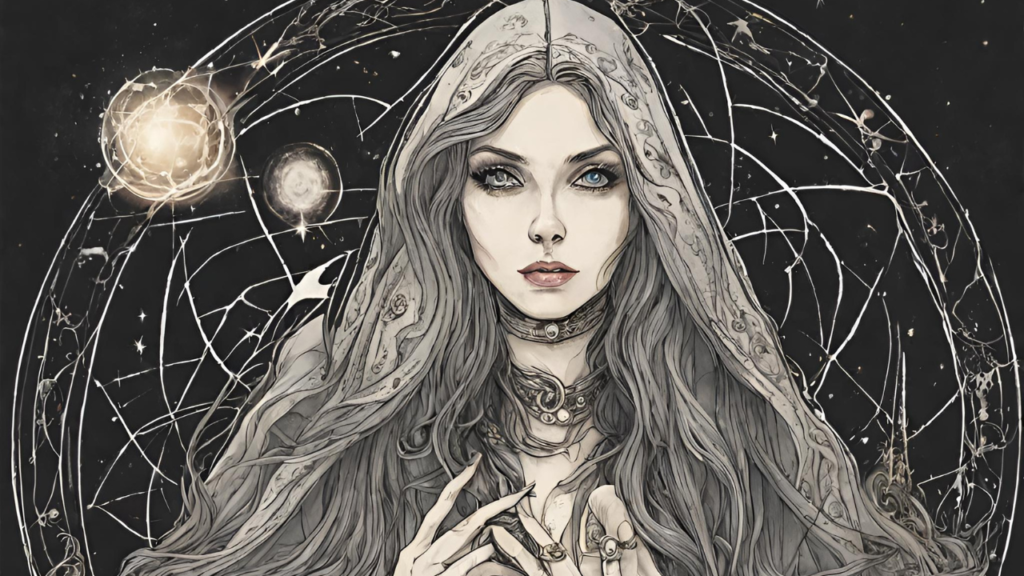
Additionally, witchcraft emphasizes personal responsibility and the concept of the threefold law. This law states that whatever energy a witch puts out into the world, whether it be positive or negative, will come back to them threefold. As a result, ethical considerations play a crucial role in witchcraft, with practitioners striving to do no harm and always acting with integrity. It is important to note here that not all witches and practitioners of the Craft believe in the threefold law and therefore do not apply this concept to their craft.
Moreover, witchcraft is deeply connected to nature. Witches have a profound reverence for the Earth and all its elements, viewing them as sacred and imbued with power. They celebrate the cycles of the seasons and often conduct rituals outdoors, drawing energy from the natural world.

Understanding the basics of witchcraft is the first step towards embarking on this transformative spiritual journey. By grasping these fundamental principles, you lay the groundwork for further exploration and growth within the Craft. So, embrace your curiosity and open yourself up to the beauty and wisdom that awaits you in the world of witchcraft.
The Roots of Witchcraft
The roots of witchcraft run deep, intertwined with the ancient history of humanity. From ancient civilizations to modern-day practices, the Craft of the Wise has evolved and adapted over time. To truly understand witchcraft, it is crucial to explore its roots and discover the rich tapestry of cultures and traditions that have shaped this fascinating practice.
Witchcraft can be traced back to prehistoric times, when early humans looked to the natural world for guidance and protection. They developed rituals and ceremonies to honor the spirits and forces that governed their lives, seeking harmony and balance in their existence. These early forms of witchcraft were deeply connected to the Earth and the cycles of nature, recognizing the power and wisdom inherent in the natural world.

As civilizations rose and fell, witchcraft took on different forms in various cultures. In ancient Egypt, witchcraft was deeply intertwined with the worship of the goddess Isis and the practice of divination. In ancient Greece and Rome, witches were seen as wise women with a deep understanding of herbal medicine and healing. In Norse mythology, witches called seidr practitioners connected with the spiritual realm to gain insight and perform magic.
The Middle Ages brought about a darker perception of witchcraft, as it became associated with the devil and evil forces. The witch hunts and trials during this time resulted in the persecution and execution of countless innocent people. It was a period marked by fear and ignorance, with the true essence of witchcraft being overshadowed by superstition and paranoia.
In recent centuries, the understanding and perception of witchcraft have evolved. With the advent of the Wiccan movement in the mid-20th century, witchcraft began to regain its spiritual and mystical roots. Wicca, a modern form of witchcraft, drew inspiration from ancient pagan traditions, emphasizing the worship of nature and the goddess. This resurgence of witchcraft brought about a renaissance in the Craft, as practitioners sought to reclaim their ancestral connections and explore the mysteries of the universe.

Today, witchcraft encompasses a vast array of practices and beliefs, each influenced by the individual’s unique cultural and spiritual background. From traditional witchcraft to eclectic and neo-pagan practices, there is a place for everyone within the diverse and inclusive community of witches.
The roots of witchcraft remind us of our connection to the past and our inherent connection to the natural world. By delving into the history of witchcraft, we gain a deeper appreciation for this ancient craft and the wisdom it holds.
The Craft of the Wise
Witchcraft, often misunderstood and misrepresented and is truly the Craft of the Wise. This ancient practice is a spiritual path that embraces the beauty and wisdom found in nature, intuition, and personal growth. It is a way of connecting with the divine and harnessing the power within ourselves and the universe.
Witchcraft, at its core, is about honoring the cycles of life and embracing the interconnectedness of all things. It teaches us to appreciate the natural world and recognize the divine presence within it. By tapping into our intuition and trusting our inner wisdom, we can navigate the complexities of life and find guidance from the universe.
The Craft of the Wise emphasizes personal responsibility and ethical considerations. Witches understand the concept of the threefold law, which states that whatever energy we put out into the world will come back to us threefold. This encourages us to act with integrity, to strive to do no harm, and to always consider the consequences of our actions.
One of the most beautiful aspects of witchcraft is its deep connection to nature. Witches have a reverence for the Earth and all its elements, seeing them as sacred and imbued with power. They understand that the cycles of the seasons reflect the cycles of our own lives, and they celebrate and honor these cycles through rituals and ceremonies. By aligning ourselves with the natural world, we can tap into its energy and find harmony and balance within ourselves.

The Craft of the Wise is a personal and transformative journey. It is about discovering who we truly are, embracing our strengths and weaknesses, and growing into the best version of ourselves. It teaches us to trust our intuition, to seek knowledge and wisdom, and to find our place in the world.
Principles and Ethics in Witchcraft
Witchcraft is not just about casting spells and performing rituals; it is also deeply rooted in principles and ethics that guide the practice. As a witch, it is essential to understand and embody these principles to ensure a responsible and ethical approach to the Craft. In this section, we will explore the fundamental principles and ethics that govern the practice of witchcraft.
One of the core principles in witchcraft is personal responsibility. Witches understand that they are accountable for their actions and the energy they put out into the world. This means taking responsibility for the intentions behind their spellwork and ensuring that their actions align with their values. Practicing personal responsibility requires self-reflection and constant evaluation of one’s actions to ensure that they are in line with the principles of witchcraft.
Ethics also play a significant role in witchcraft. Witches strive to do no harm and always act with integrity. This means respecting the free will and autonomy of others and avoiding manipulation or coercion. It is important to remember that the threefold law applies here – whatever energy is put out into the world will come back to the witch threefold if you believe it so. By adhering to ethical considerations, witches cultivate a positive and harmonious energy in their practice.
Respecting nature is another fundamental principle in witchcraft. Witches have a deep reverence for the Earth and its elements, recognizing them as sacred and powerful. They strive to live in harmony with nature, utilizing its resources responsibly and promoting sustainability. This principle extends to working with herbs, crystals, and other natural materials, ensuring that they are obtained ethically and used with gratitude.

Witches also value knowledge and wisdom. The pursuit of knowledge is an ongoing journey in witchcraft, as witches are constantly seeking to deepen their understanding of the Craft. This involves studying various traditions, exploring different practices, and constantly questioning and expanding their knowledge. It is through this pursuit of knowledge that witches can grow and evolve in their spiritual journey.
By embracing these principles and ethics, witches create a strong foundation for their practice. They cultivate a deep sense of personal responsibility, act with integrity, respect nature, and seek knowledge and wisdom. These principles not only guide the actions of witches but also contribute to a more ethical and harmonious existence. As you embark on your own journey in witchcraft, I encourage you to embrace these principles and let them guide your path.
The Role of Nature in Witchcraft
Nature plays a significant role in the practice of witchcraft. Witches have a deep connection and reverence for the Earth and its elements, viewing them as sacred and imbued with power. The natural world provides endless inspiration and guidance for witches, serving as a source of energy, wisdom, and spiritual connection.
One of the ways witches incorporate nature into their practice is through rituals and ceremonies conducted outdoors. By being in nature, they can tap into its energy and draw upon its natural elements to enhance their magical workings. Whether it’s performing a spell under the light of the full moon or creating an altar using stones and leaves found in the forest, witches seek to align themselves with the rhythms of the Earth.

Nature also provides witches with a vast array of tools and materials to enhance their craft. From herbs and flowers to crystals and feathers, the natural world offers a treasure trove of resources that witches can use for their rituals and spells. These natural materials are believed to hold specific energies and properties, which can be harnessed and directed towards a specific intention.
In addition to physical materials, nature serves as a powerful teacher and guide for witches. By observing the cycles of the seasons, witches learn valuable lessons about life, death, and rebirth. They understand that just as the Earth goes through periods of growth and decay, so do we. By embracing these natural cycles, witches gain a deeper understanding of their own personal growth and transformation.
The beauty and wonder of the natural world inspire awe and gratitude in witches. They understand the interconnectedness of all living beings and recognize that we are all part of a greater whole. This deep reverence for nature fuels their desire to protect and preserve the Earth, leading many witches to advocate for environmental sustainability and conservation.
By immersing themselves in nature, witches cultivate a deeper sense of connection, grounding, and harmony within their practice. They find solace and peace in the embrace of the natural world, and it serves as a constant reminder of the beauty and power that exists within and around us.
As you embark on your own journey in witchcraft, I encourage you to take the time to connect with nature. Step outside, breathe in the fresh air, feel the earth beneath your feet, and allow yourself to be in awe of the natural world. Take a walk in the forest, meditate by a river, or simply sit in your backyard and observe the beauty around you.
The Craft of the Wise in Modern Times
In today’s modern world, witchcraft has experienced a resurgence in popularity and acceptance. No longer shrouded in secrecy and fear, witchcraft has emerged as a respected spiritual practice that embraces diversity, individuality, and personal growth.
With the rise of the internet and social media, information about witchcraft is readily accessible to anyone who seeks it. Online communities and forums allow witches from all walks of life to connect, share experiences, and learn from one another. This virtual network has created a sense of community and support that was once hard to find.
Moreover, the portrayal of witchcraft in popular culture has shifted in recent years. Instead of being depicted as evil or malicious, witches are now portrayed as powerful, wise, and independent. This change in representation has helped to break down stereotypes and increase acceptance of witchcraft in society.

In modern times, witchcraft has also adapted and evolved to meet the needs of individuals in today’s fast-paced world. Many practitioners incorporate technology into their rituals, using digital tools and apps to enhance their practice. Online spellcasting services and virtual workshops provide accessible resources for those seeking to learn and engage in witchcraft.
Furthermore, witches today are using their craft as a means of self-care and personal empowerment. Witchcraft has become a way to tap into one’s inner strength and intuition, to heal past wounds, and to create a positive and balanced life. Through meditation, visualization, and ritual, witches are able to connect with their higher selves and find guidance and support.
As the world continues to change and evolve, witchcraft remains a timeless and adaptable practice. It offers individuals a way to connect with their spirituality, embrace their individuality, and find harmony in their lives. Whether you are new to witchcraft or have been practicing for years, the modern era offers endless possibilities for exploration and growth within the craft.
So, if you are feeling called to explore the world of witchcraft, I encourage you to embrace this ancient and transformative practice. Connect with others, dive into the vast resources available, and trust in your own intuition. With an open heart and mind, you will discover the beauty and power that awaits you in the world of witchcraft.
Getting Started with Witchcraft
If you’re feeling drawn to the enchanting world of witchcraft and are eager to embark on this transformative spiritual journey, you’ve come to the right place. Getting started with witchcraft can be an exciting and empowering experience, and this section will provide you with the essential steps to begin your practice.
1. Embrace your curiosity: The first step in getting started with witchcraft is to embrace your curiosity and open yourself up to the possibilities that await you. Explore the vast resources available, from books to online communities, and let your intuition guide you towards the path that resonates with you.
2. Research and learn: Dive into the world of witchcraft by reading books, watching educational videos, and attending workshops. Educate yourself about the different traditions, practices, and tools that are part of the craft. This knowledge will lay a strong foundation for your practice and help you develop a deeper understanding of the Craft of the Wise.
3. Connect with others: Join online communities and local groups of like-minded individuals who share your interest in witchcraft. Engage in discussions, ask questions, and learn from others’ experiences. Connecting with fellow witches will not only provide you with support and guidance but also expand your knowledge and perspectives.
4. Start a journal: Keeping a journal is a valuable tool in your witchcraft journey. Use it to record your thoughts, feelings, and experiences, as well as your dreams, intentions, and spells. Your journal will serve as a personal reflection and a reference guide as you continue to grow in your practice.
5. Start with simple rituals and spells: Begin your practice by performing simple rituals and spells that align with your intentions and interests. Focus on grounding and protection rituals, as these will provide you with a solid foundation and create a safe space for your magical work. Experiment with different herbs, candles, crystals, and incense to enhance your spells.
6. Trust your intuition: Trusting your intuition is key in witchcraft. Listen to your inner voice and follow your instincts when it comes to selecting rituals, tools, and spell ingredients. Your intuition is a powerful tool that will guide you on your spiritual journey.
Remember, getting started with witchcraft is a personal and unique journey. Take your time, be patient with yourself, and trust the process. The beauty and power of the Craft of the Wise await you as you embark on this transformative path. So, embrace your curiosity, connect with others, and let your intuition be your guide as you embark on this magical journey of self-discovery.



